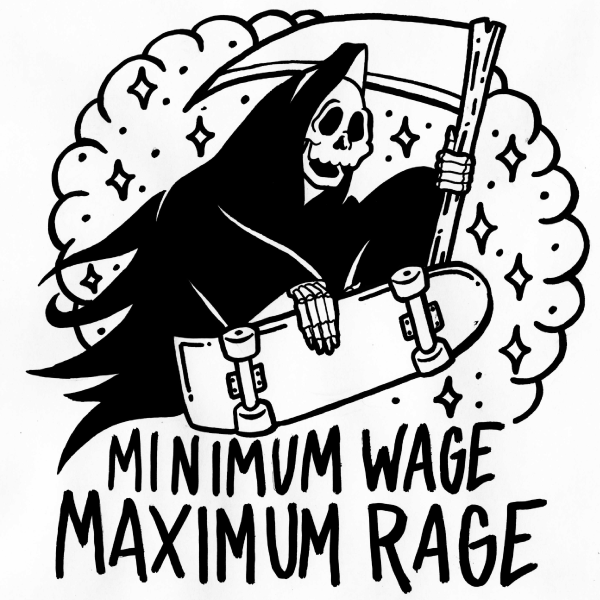Well…you should? It takes no efforts and has tangible benefits on how your meal cooks
Because in a recipe it’s impossible to specify cooking times without pre-heating. It’s easy to say 10 minutes at 200 degrees, because this would be exactly the same for everyone. Every oven is different, so the time would be different depending on your oven, which the person writing the recipe can’t know. So if the instructions on something like bread say pre-heat and bake for 10 minutes at 200 degrees, they know the result would be good.
There is also the fact ovens warm up differently. If there is a heating element within the compartment where the food is being heated (especially above), this element gets way too hot and emits a lot of infrared radiation whilst heating up the oven. It does this because it wants to get to the set temperature as fast as possible. Once it gets there it only needs to maintain that temperature, which is much easier, so the heating element gets much less hot during this time. If you set something like a cake in the oven with a heating element right above it, best case the top of the cake gets baked more than the rest, worst case the top gets burnt before the inside cooks.
Then there’s the fact whilst heating the temperatures inside the oven fluctuate a lot, some parts get hot fast, other parts take more time. When you have food that’s sensitive to that you def need to preheat.
And there’s a lot of chemistry going on, for example some foods get really greasy if they don’t get hot enough while cooking. Whilst these food could be cooked with the temperature going from 50 - 150 degrees, the end result would be much better if it’s just cooked at 200 during the whole process.
Now there are a lot of cases where this doesn’t matter and if you know your oven well enough you can compensate. But there are plenty of legit reasons to pre-heat and you may even have better results when pre-heating, even if the end result was fine before.
So I agree, people should pre-heat and there are tangible benefits!
As a preheated oven, I can confirm this
The issue is from the element getting too hot while warming the oven up. Some ovens have features that warm the oven slower while still cooking some food correctly. Doesn’t work for baking obviously.
It winds up being a Little faster on my oven than preheat and cook. Adds about 8 minutes while preheating can be around 15-20.
when i was a kid, our ovens (🥑 green!) had a separate pre-heat setting and if you forgot to switch it to ‘bake’, it really messed up what you were trying to make.
Yer foods gonna be shite
Not necessarily tbh
Generally speaking, ovens will put out as much heat from the heating element as possible to reach the desired temperature quickly. Once at that temp, the oven maintains a largely even and consistent temperature so long as you aren’t opening it repeatedly. That allows you to have the same temperature surrounding your food at all times and have predictable cooking results and timing.
If you put food in at the start without preheating, your food is surrounded by room temp air instead of heated air, yet is exposed to high temp direct radiant heat from the heating element. It will eventually reach the even temp expected, but only after several minutes of that initial exposure to the direct heat of the element. That is far more likely to lead to over cooking the surface exposed to the heating element and/or undercook the remaining surfaces and interior. It is closer to trying to bake in a grill than in an oven.
If the thing you’re cooking is thin and is fine to heat from largely one side (like a pizza), your results may be acceptable if you keep an eye on it. If it is a cake or something though, it will be hot garbage, either burnt or soupy. Regardless, the cooking times on the instructions will not be remotely accurate.
Yeah that’s fair, but I feel it depends on what you’re cooking. Generally it’s a good idea to preheat the oven because you’ll get a more consistent cooking temperature. But for some things like shortbread, I often get a better result putting the dough into a cold oven as long as I’m consistent with the time. I’d never put something yeasted like bread into a cold oven tho that would be silly.
This logic will never make sense to me.
I don’t see any attempts to logic, it’s just fewer steps:
-
turn on oven
-
put frozen pizza in
versus
-
turn on oven
-
wait
-
put frozen pizza in
You end up with a worse pizza without waiting.
Unless you’re high and eating a Totinos party pizza like a taco, then all bets are off.
People be lazy and just want to eat “something”, even if it sucks
I notice zero difference between preheated pizza and non-preheated pizza. What would the difference even be?
Probably little to none for most pizzas since they’re so thin, but with something like a deep dish you might end up with cooked cheese/toppings and doughy crust, or cooked crust and burnt cheese/toppings, or vice versa if the heating element is on the bottom.
Was that a dig at Totinos party pizzas? If so, we can’t be friends anymore.
And there’s no other way to eat those than folded over like a taco!
No, it’s really the only exception.
not a fan of the square-ish party pizzas they have now, but they do fold-over a lot easier.
You consider waiting a step?
-
Bro it’s super easy and makes cooking way more consistent… You’re not cool for not preheating lol
The oven is quite cool on the other hand
How to undercook food 101
And overcook at the same time.
I always just never preheat but keep the food in for an extra 15% of the time it says on the recipe.
I microwave it for 2.5 times the oven time.
You’re literally always going to be wrong
That means your literally half cooking your food, anything below the correct temp is generally doing nothing, so either you are messing up your final product unknowingly or realizing it’s undercooked and having to leave it in the oven for longer to make up the difference.
It’s not a time saver, it’s just making bad food. What a weird self own.
either you are messing up your final product unknowingly or realizing it’s undercooked and having to leave it in the oven for longer to make up the difference.
For frozen pizza/nuggets/etc, the cooking time is always a range. I always just put it in while it preheats and set the timer for the top of the range. Everyone’s oven and preferences are different anyway so it’s not like some exact science. If they’re underdone, I leave them in another minute. Overall it saves time.
Always preheat to the exact temp. Otherwise you’ll have half-assed food.
Edit somehow I got on your profile page… I was wondering why every post I commented was yours haha.
Do you never use the oven or do you just make terrible food when you cook? 🤔
yummy soggy undercooked pizza
You can just cook it longer
mmmm overcooked outside and soggy inside yumm
Actually would be the opposite problem, the inside would cook for a little at a temperature not high enough to crisp it, but a crust will start forming. Then when you finally get some color the crust will be too thick and the inside might be a little dry.
Sometimes things come out better that way, so do as you wish. Just know that many things will come out leagues better if you do that extra bit of prep.
I don’t care what you say. I stir-fry in a cold pan like a boss. I like my vegetables flopsy and oily thank you very much
“Stop instructing me to wash my ass, I’m literally never going to wash my ass.”
for food that you make all the time where you have figured out the timing perfectly, for sure, go ahead. that saves energy.
but if you bake a cake or some shit that you don’t do as often, always follow the recipe. i’ve had some pretty bad cakes from people who did not do what it said in the funny food book.
Leavened products, especially chemically leavened ones like cakes, need the oven to be hot when they go in for proper texture. The heat creates steam which means more and bigger bubbles, and the baking powder also reacts better at high temperatures, producing even more bubbles. And these bubbles need to start growing before the protein in the flour starts to set, otherwise they stay small and you get a dense texture.
I never turn my over off, so I don’t run into that problem.
Imagine actively deciding to make shittier food, couldn’t be me















